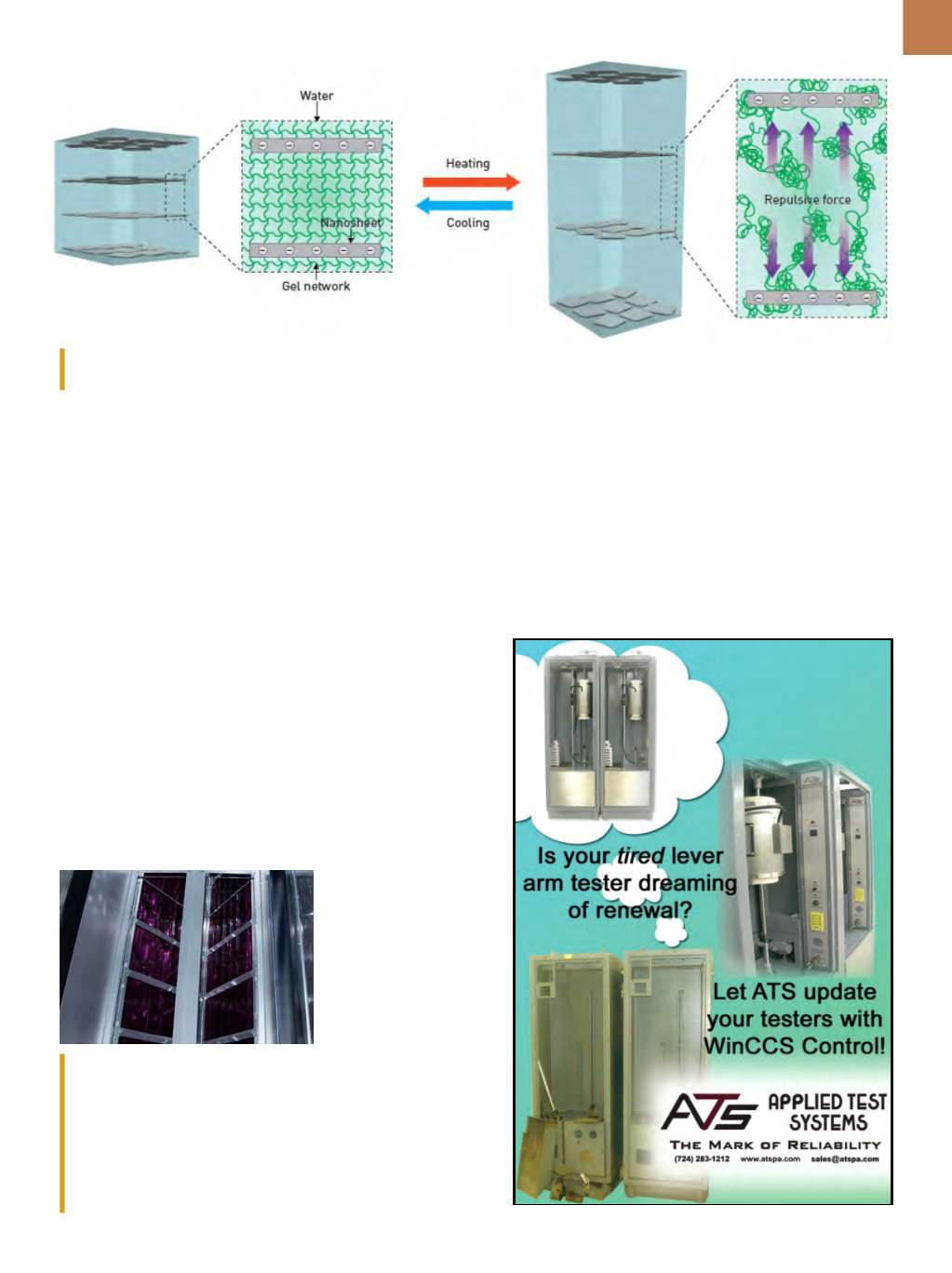

A D V A N C E D
M A T E R I A L S
&
P R O C E S S E S |
N O V E M B E R / D E C E M B E R
2 0 1 5
9
repulsion tomake the hydrogel perform
like a coiled spring.
Researchers exploited their hy-
drogel’s large and rapid thermally in-
duced shape changes by designing an
actuator that walks when exposed to
alternating temperature cycles. Their
L-shaped gel contains two “feet” in
contact with a horizontal, underwa-
ter surface. On heating, the back foot
elongates, propelling the gel forward.
A quick plunge in temperature then
draws the feet back into position for
another kick forward. The team is cur-
rently working on improving material
properties with a view to achieving
their ultimate goal—a new generation
of hydrogel-based artificial organs and
muscles.
For more information: Yasuhi-
ro Ishida, 81.048.462.1111 ext. 6351,
y-ishida@riken.jp,
www.riken.jp/en.RARE EARTHS HELP PROBE
PARTICLE PHYSICS
In recent work by Lawrence Liv-
ermore National Laboratory, Calif.,
scientist Michael Hohensee and col-
leagues discovered that the properties
that make rare earth elements so useful
also make them great probes of physics
beyond the Standard
Model of particle phys-
ics—a theory concern-
ing the electromagnet-
ic, weak, and strong
nuclear
interactions,
as well as classifying all
the known subatomic
particles.
According to Ho-
hensee, rare earths
make great magnets
in part because their
valence electrons have
more orbital angular
momentum than other
elements, and because
other electrons form a
shield around the va-
lence electrons. This
shield also helps make
themgood laser media,
as it prevents external
heat and noise from
affecting the laser tran-
sitions,
maintaining
the rare earths’ unique
properties when they
are mixed (or doped)
into a piece of glass or
Each of the National Ignition Facility’s
(NIF) 192 beamlines contains two large
amplifier sections. The amplifiers are
designed to efficiently provide 99.99% of
NIF’s power and energy. Laser amplifier
glass is doped with rare earth ions, which
prevent external heat and noise from
affecting the laser transitions.
crystal. “Thanks to both these proper-
ties, the electronic states of rare earths
doped in a crystal make possible an
electronic equivalent of the Michel-
son-Morley experiment that would be
more sensitive than any other yet per-
formed, helping to validate or rule out
unified theories of gravity and particle
physics,” says Hohensee.
llnl.gov.Researchers created a muscle-like hydrogel by trapping face-stacked inorganic nanosheets within a polymer network. The repulsive force
between the charged nanosheets becomes greater with increasing temperature, causing the material to elongate in one direction.


















